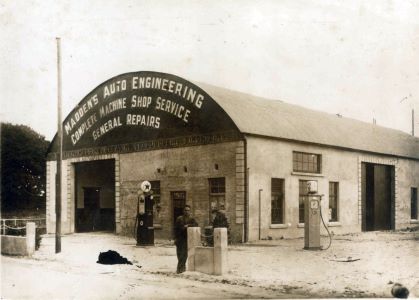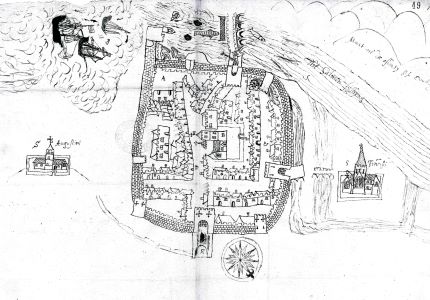Old Galway
TONERY’S PUB, 60 YEARS IN BOHERMORE

by Tom Kenny
Jim Tonery opened his pub in Bohermore 60 years ago yesterday, on June 5th, 1959. It was formerly owned by Johnny and Kate Martyn. The inside walls were whitewashed to keep them clean and also disinfected. Barrels were stored against the back wall and sometimes used as seating with planks on top. One had to be careful when entering as there was a small step down just inside the door and if you missed it and staggered, you were likely to hear Mrs. Martyn say “Go back to where you came from, you have enough in already”. Johnny Martyn was a blacksmith and he had a forge attached to the pub where he shod horses, made gates etc.
MADDEN’S GARAGE

by Tom Kenny
The Madden brothers came originally from near Ballinasloe. They emigrated to the U.S. and when the depression happened, one of them, Jackie made up his mind to remain in America, but the others decided to return to Galway and set up in business. Two of them, Willy and Charley, developed the nurseries on Taylor’s Hill, Miko opened a garage in Woodquay and Jimmy built this garage at Nile Lodge with the help of his brother Willy. It was on a terrific location, situated on a junction of the two main roads from the city to Salthill.
MEDIEVAL GALWAY

by Tom Kenny
This very stylized plan of Galway was made in 1583 by Barnaby Googe and is the earliest surviving map of the city. It shows the walled town as it stood at the end of the medieval period. Galway was packed with houses: the D-shaped circuit of walls with mural towers and gates was complete; there was only one bridge over the fast flowing river, which was also an important salmon fishery and it possessed a wharf or landing place for ships. The Parish Church of St. Nicholas and the central market place with its market cross were prominent in the townscape, which was structured around the north-east/south-west axis of Shop Street branching into Main Guard Street and High Street/Quay Street.
DRUID, 40 YEARS IN THE LANE

by Tom Kenny
Druid Theatre Company was founded in May, 1975 with the initial aim of providing theatre entertainment for tourists in Galway. They opened with three full length plays on successive nights in the Jesuit Hall. The season was a success so they made the very brave decision to operate the company on a full-time basis. Their productions were presented on a fit-up basis as were a number of lunch time shows in the Fo’Castle in Dominick Street. They converted this latter venue into a fully equipped pocket theatre seating 47 people. It was a popular venue, well supported but there were problems with regard to backstage, storage and office space.
Cloran’s Cross

by Tom Kenny
In May, 1846, as part of a Famine relief project, 175 people were employed to build a road linking Dangan to Salthill. Part of that road was known as Bóthar na Mine (the Road of the Indian Meal ) because all of the wages were used to buy oatmeal. I have never been able to find out how, when, or why this name was translated into English as Threadneedle Road.
The Piscatorial School

by Tom Kenny
Living conditions were very bad in the Claddagh during the Famine. Most people there made their living from the sea but they refused to adapt to new and more effective fishing techniques which would have improved their catches, and so their income was affected and poverty ensued. Most of the fishermen there had put their nets in hock just to keep their families alive. Equally, Claddagh people were opposed to education, as their sons would grow up to be fishermen, they felt no need to send them to school.
The Docker's Rugby Team

by Tom Kenny
Galway Rovers Rugby Football club first played competitively in 1899. In 1907, they won the Connacht Junior Cup, which had been presented two years previously to the Union by Professor Alfred Senior. The club disbanded after that, probably during World War 1, but it was revived by a man named John L. Sullivan in 1931.
THE SPANISH ARCH FROM LONG WALK

by Tom Kenny
Long Walk was originally built as a wall by the Eyre family in order to construct a mud berth. Among those who lived there around the time this photograph was taken were Tom Gannon, Sarah O’Donnellon, Mrs. Hosty and Pateen Green. There was an entry through a large archway into a courtyard known as Green’s Alley and the five houses there were occupied by the Andersons, McDonaghs, Canavans, Gorhams and Finnertys. A Mrs. McDonagh lived next door in a building known as ‘The Hall’ and further on lived Mrs. Lee, John Folan, Bideen Joyce, Ella McDonagh, Mrs. Folan and Mike Walsh.
